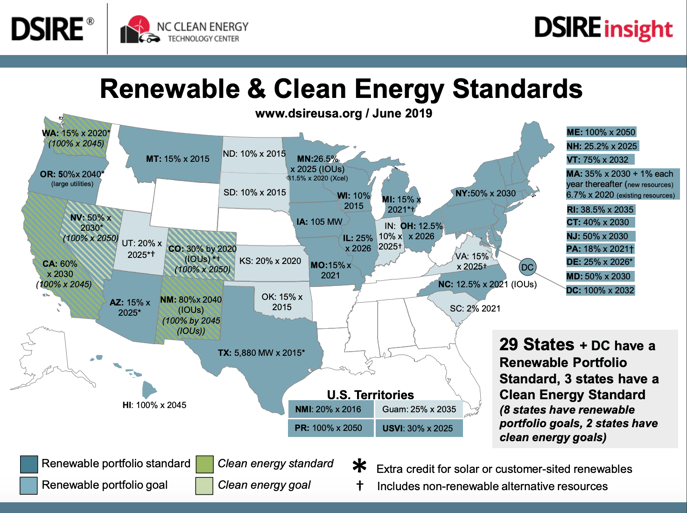Renewable Portfolio Standards (RPS) require that a specified percentage of the electricity that utilities sell comes from renewable resources.
38 states + D.C. have a Renewable Portfolio Standard
Iowa was the first state to establish an RPS and since then, more than half of states have established renewable energy targets. Thirty states, Washington, D.C., and three territories have adopted an RPS, while seven states and one territory have set renewable energy goals. These policies can play an integral role in state efforts to diversify their energy mix, promote economic development and reduce emissions.

According to the U.S. Department of Energy's National Renewable Energy Laboratory (NREL) and Lawrence Berkeley National Lab (LBNL), RPS policies do not significantly raise electricity rates and often result in cost savings for consumers. They also spur local demand for renewable technologies, creating jobs, and economic development.
Interactive Map: U.S. State Electricity Portfolio Standards map from SEIA. READ MORE →
Table: DSIRE's table of state RPS policies and the state definition of renewable energy: READ MORE →
Last Updated: 6/18/2020
Have suggestions? Shoot us an email with a link to this article and help us make it better.

Generation180 has toolkits, guides, reports, and more to help your school go solar. Visit SolarForAllSchools.org for even more resources.
